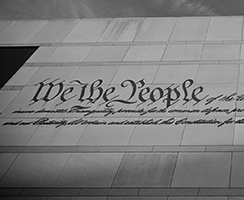Summary
Dobbs v. Jackson Women’s Health Organization was a landmark decision addressing whether the Constitution protects the right to an abortion. In Dobbs, the Supreme Court reviewed the constitutionality of Mississippi’s Gestational Age Act—a law banning most abortions after 15 weeks of pregnancy with exceptions for medical emergencies and fetal abnormalities. In a divided opinion, the Court upheld the Mississippi law and overturned Roe v. Wade (1973) and Planned Parenthood v. Casey (1992)—concluding that the Constitution does not protect the right to an abortion. As a result, the Court’s decision returned the issue of abortion regulation to the elected branches. In an opinion concurring in the judgment, Chief Justice Roberts agreed to uphold the Mississippi law, but chided the majority for reaching out to decide the broader question of whether to overrule Roe and Casey. He would have left that important constitutional question to a future case. Finally, in a rare joint dissent, Justices Breyer, Kagan, and Sotomayor criticized the Court for unsettling nearly five decades of precedent and undermining the Constitution’s promise of freedom and equality for women.





